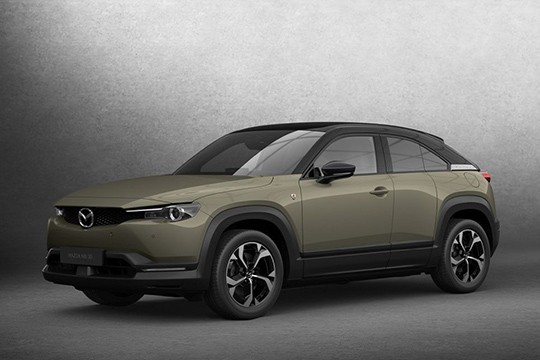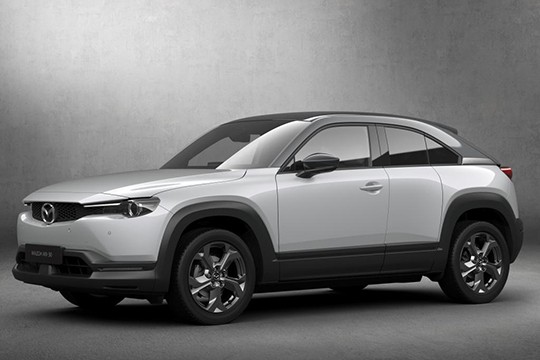MAZDA MX-30 Models/Series Timeline, Specifications & Photos
First production year: 2019
Engines: Plug-in hybrid, Electric
Body style: SUV (Sports Utility Vehicle)
After successfully introducing the MX-30 EV crossover on the market in 2019, Mazda made another ambitious step and launched a version fitted with a range extender in 2022.
The Japanese automaker was renowned for its rotary engines installed in the RX-7/RX-8 series. Unfortunately, this type of powerplant failed to meet the pollution norms and had to be ditched in 2012. But Mazda didn't want to sack it for good and found a new way of using it by installing one in the MX-30 e-Skyactive R-EV. Such a long name for a version...
Mazda didn't bother to create a new design for its crossover, and it looked similar to the regular MX-30 EV. It still sported those rear-hinged rear doors, like in the former RX-8, and without a B-pillar. The only significant difference was the new badges, which said "e-Skyactive R-EV."
Inside you are greeted with a cabin made mostly from fibrous materials. For example, the door trim is covered with fibers made from recycled plastic bottles, while parts of the center console trim are covered in a texture called Heritage Cork, which is a material harvested from the bark of trees without felling. For the first time in a Mazda production car, a 7-inch touch panel heater control has been fitted inside to offer better control.
Under the hood, the car featured a drivetrain consisting of an 830 cc Wankel rotary engine that was used exclusively to charge the batteries. A 17.8 kW battery pack and a 50-liter (13.2-gal U.S.) tank fueled the system and helped the vehicle achieve a range of 373 miles (600 km). Unlike the MX-30 EV, the R-EV version was propelled by a 170 PS motor, thus providing slightly better performance than the 143 hp provided by its electric-only cousin.
Mazda's first ever production electric vehicle, the MX-30 is a funky looking crossover that attempts to combine the design ethos found on old Mazda sports cars with the comfort and features of a modern compact crossover. Its exterior look represents a new step in the Kodo design language, for the first time featured on a production EV with a Mazda badge that tries to enter uncharted territory for the Japanese carmaker.
By far the most controversial design feature of the model is represented by the so-called "freestyle rear doors," which are smaller than on a normal car and open backwards. Harking back to the Mazda RX-8's clamshell rear doors, a model that also lacked a B-pillar, they provide a distinctive openness to the interior whenever you step inside or outside the car.
Inside you are greeted with a cabin made mostly from fibrous materials. For example, the door trim is covered with fibers made from recycled plastic bottles, while parts of the center console trim are covered in texture called Heritage Cork, which is a materials harvested from the bark of trees without felling. For the first time in a Mazda production car, a 7-inch touch panel heater control has been fitted inside to offer better control.
On the powertrain side, the Mazda MX-30 makes due with an electric motor that delivers 143 horsepower and sends all its power exclusively to the front wheels. Since it's seen mostly as a city car, the model uses a somewhat small 35.5 kWh lithium-ion battery, which gives it a total range of up to 209 kilometers (130 miles).

